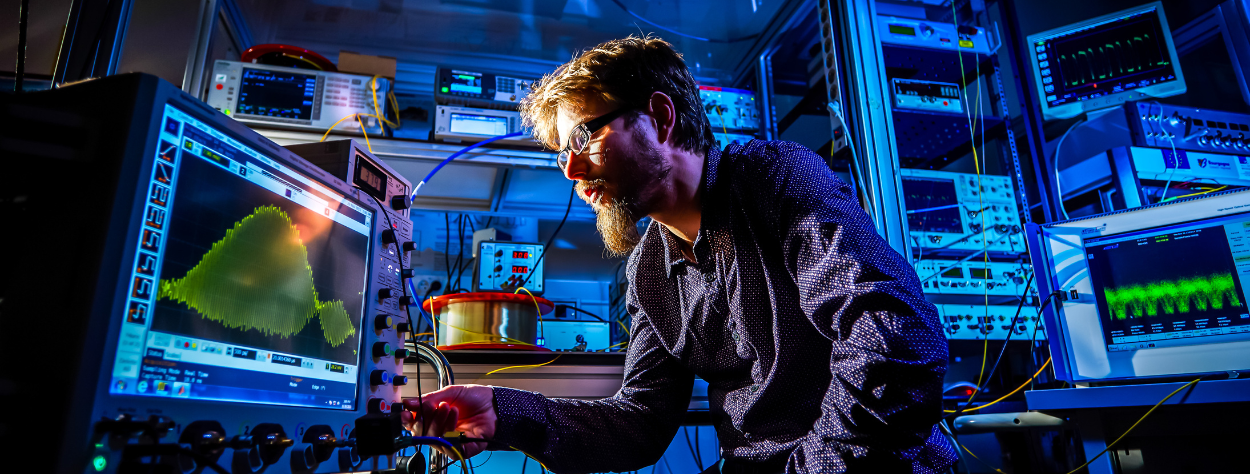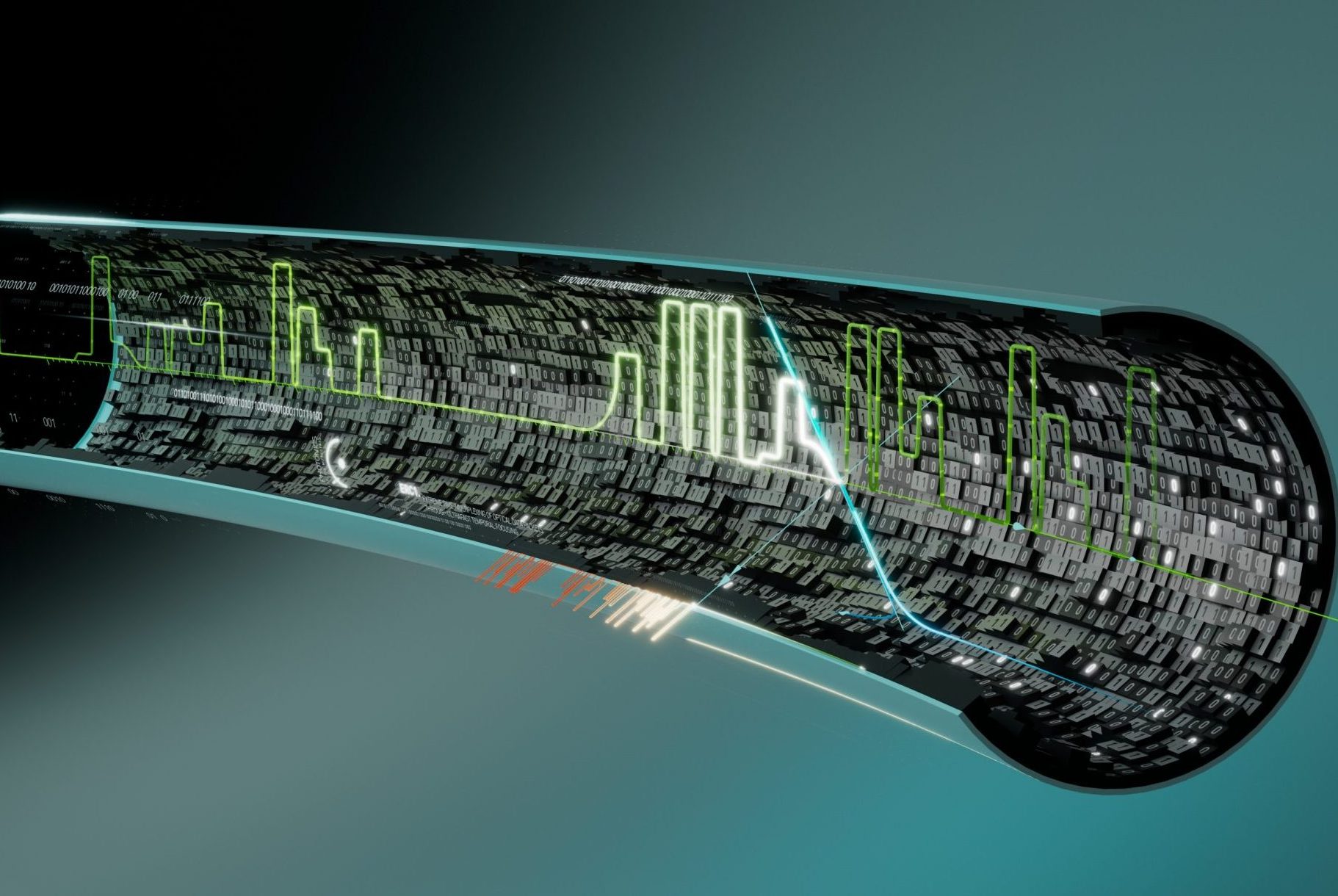Extreme temporal compression of light within an optical fiber

Our society is experiencing an unprecedented upheaval in terms of dematerialization and the use of communication networks, involving an ever-increasing increase in data flows in fiber optic networks. To cope with this increase in information throughput, it becomes essential to develop new solutions to modify the temporal extent of this data: compact it or expand it.
In collaboration with colleagues from the University of Auckland, photonics researchers from the Interdisciplinary Carnot Laboratory in Burgundy succeeded in contracting light waves in time by a factor ranging from 4,350 to 13,000 inside an optical fiber. These temporal compression values are the strongest demonstrated to date and outperform previous achievements by several orders of magnitude. This first demonstration was made possible thanks to a non-linear interaction resulting from the ultra-fast collision (twice the speed of light) of two counter-propagating laser beams propagating within an optical fiber. This phenomenon had been predicted theoretically more than 25 years ago but had never been observed before.
This work, carried out as part of an international collaboration, has been published in the prestigious journal Nature Photonics.

This new time compression device makes it possible to squeeze more light into a given time interval. It would therefore make it possible to significantly increase information throughput within fiber optic networks and data centers or to improve measurement accuracy in imaging or diagnostic applications, while using standard bandwidth equipment. moderate and low cost.
The prospects of this work in the short and medium terms will consist in miniaturizing this device on optical chips at the micrometric scale and pushing the limits of the compression factor beyond 50,000.
Contact :
- Julien.Fatome@u-bourgogne.fr
- 06.49.02.48.95
- kc_data:
- a:8:{i:0;s:0:"";s:4:"mode";s:2:"kc";s:3:"css";s:0:"";s:9:"max_width";s:0:"";s:7:"classes";s:0:"";s:9:"thumbnail";s:0:"";s:9:"collapsed";s:0:"";s:9:"optimized";s:0:"";}
- kc_raw_content:
- [kc_row use_container="yes" _id="618835"][kc_column width="12/12" video_mute="no" _id="961089"][kc_column_text _id="359739"]
Our society is experiencing an unprecedented upheaval in terms of dematerialization and the use of communication networks, involving an ever-increasing increase in data flows in fiber optic networks. To cope with this increase in information throughput, it becomes essential to develop new solutions to modify the temporal extent of this data: compact it or expand it.
In collaboration with colleagues from the University of Auckland, photonics researchers from the Interdisciplinary Carnot Laboratory in Burgundy succeeded in contracting light waves in time by a factor ranging from 4,350 to 13,000 inside an optical fiber. These temporal compression values are the strongest demonstrated to date and outperform previous achievements by several orders of magnitude. This first demonstration was made possible thanks to a non-linear interaction resulting from the ultra-fast collision (twice the speed of light) of two counter-propagating laser beams propagating within an optical fiber. This phenomenon had been predicted theoretically more than 25 years ago but had never been observed before.
This work, carried out as part of an international collaboration, has been published in the prestigious journal Nature Photonics.
[/kc_column_text][kc_spacing height="20" _id="547287"][/kc_column][/kc_row][kc_row use_container="yes" _id="125776"][kc_column width="12/12" video_mute="no" _id="978934"][kc_spacing height="20" _id="554738"][/kc_column][/kc_row][kc_row use_container="yes" _id="321505"][kc_column width="45%" _id="807346"][kc_single_image image_size="full" _id="712035" image_source="media_library" image="35067"][/kc_column][kc_column width="5%" _id="542495"][/kc_column][kc_column width="50%" _id="53815"][kc_column_text _id="48504"]
[/kc_column_text][/kc_column][/kc_row][kc_row use_container="yes" _id="354596"][kc_column width="12/12" video_mute="no" _id="634742"][kc_spacing height="20" _id="642683"][/kc_column][/kc_row][kc_row use_container="yes" _id="313739"][kc_column width="12/12" video_mute="no" _id="994751"][kc_column_text _id="14700"]This new time compression device makes it possible to squeeze more light into a given time interval. It would therefore make it possible to significantly increase information throughput within fiber optic networks and data centers or to improve measurement accuracy in imaging or diagnostic applications, while using standard bandwidth equipment. moderate and low cost.
The prospects of this work in the short and medium terms will consist in miniaturizing this device on optical chips at the micrometric scale and pushing the limits of the compression factor beyond 50,000.
Contact :
- Julien.Fatome@u-bourgogne.fr
- 06.49.02.48.95
{slide=In the newspaper}
{/slide}
[/kc_column_text][/kc_column][/kc_row]
